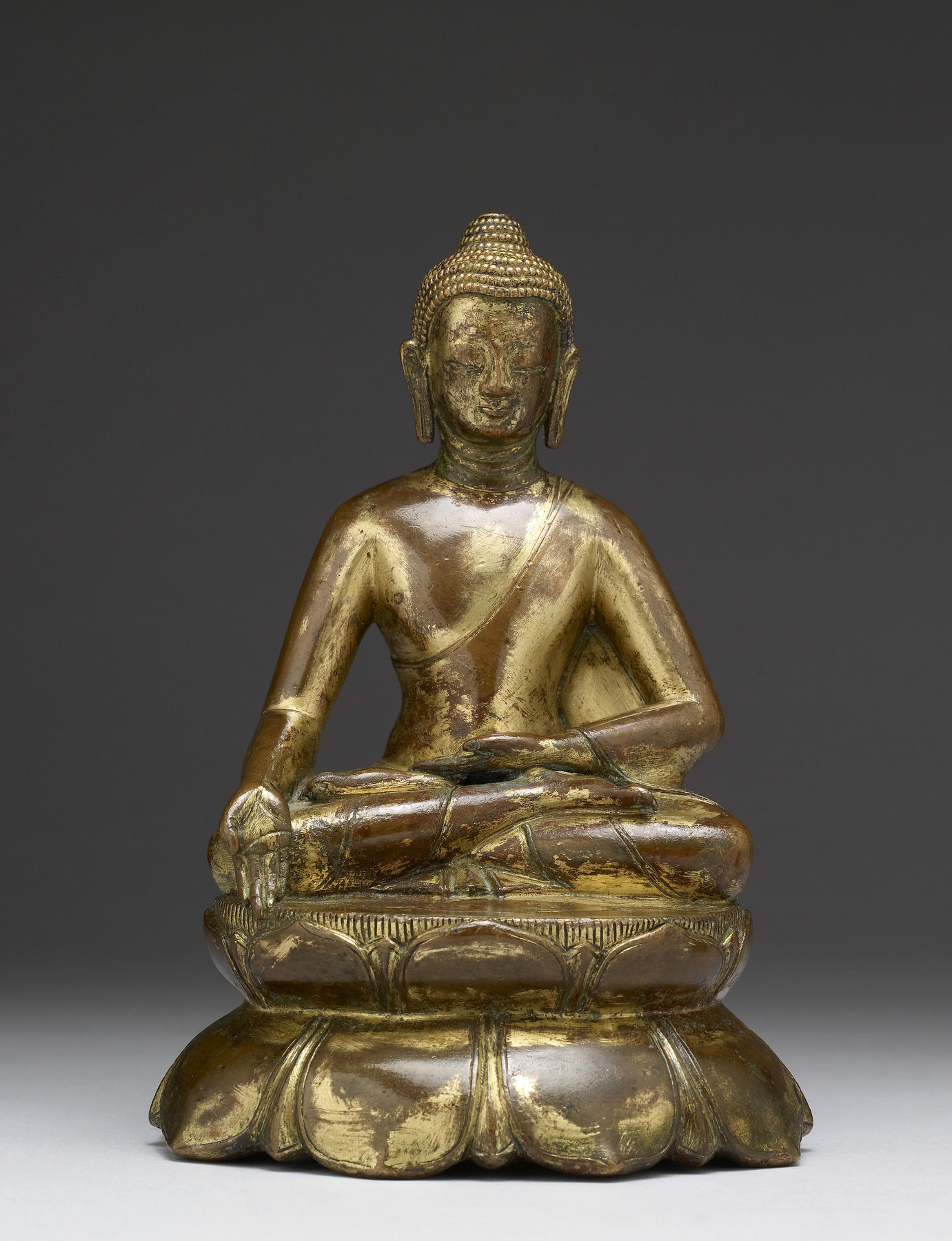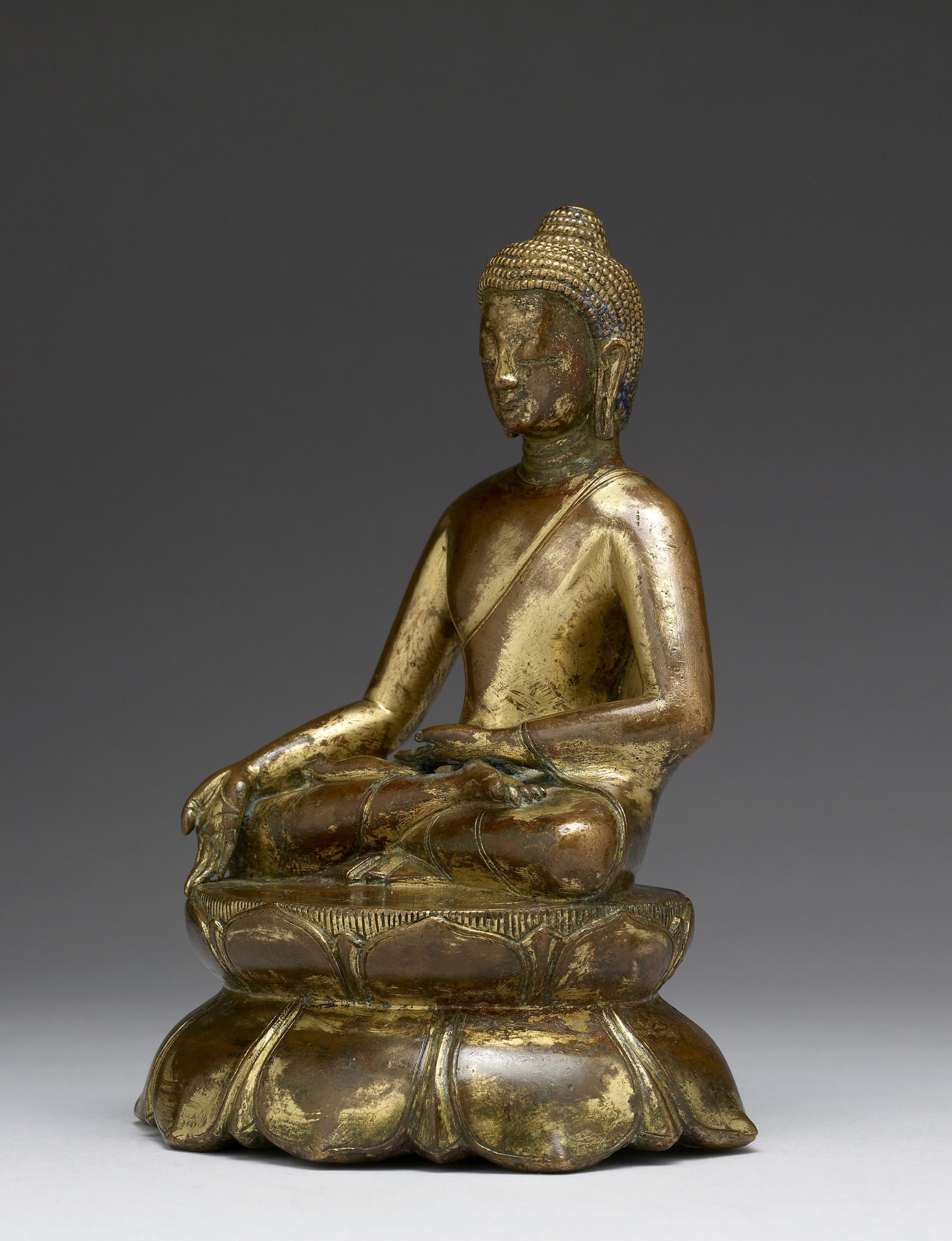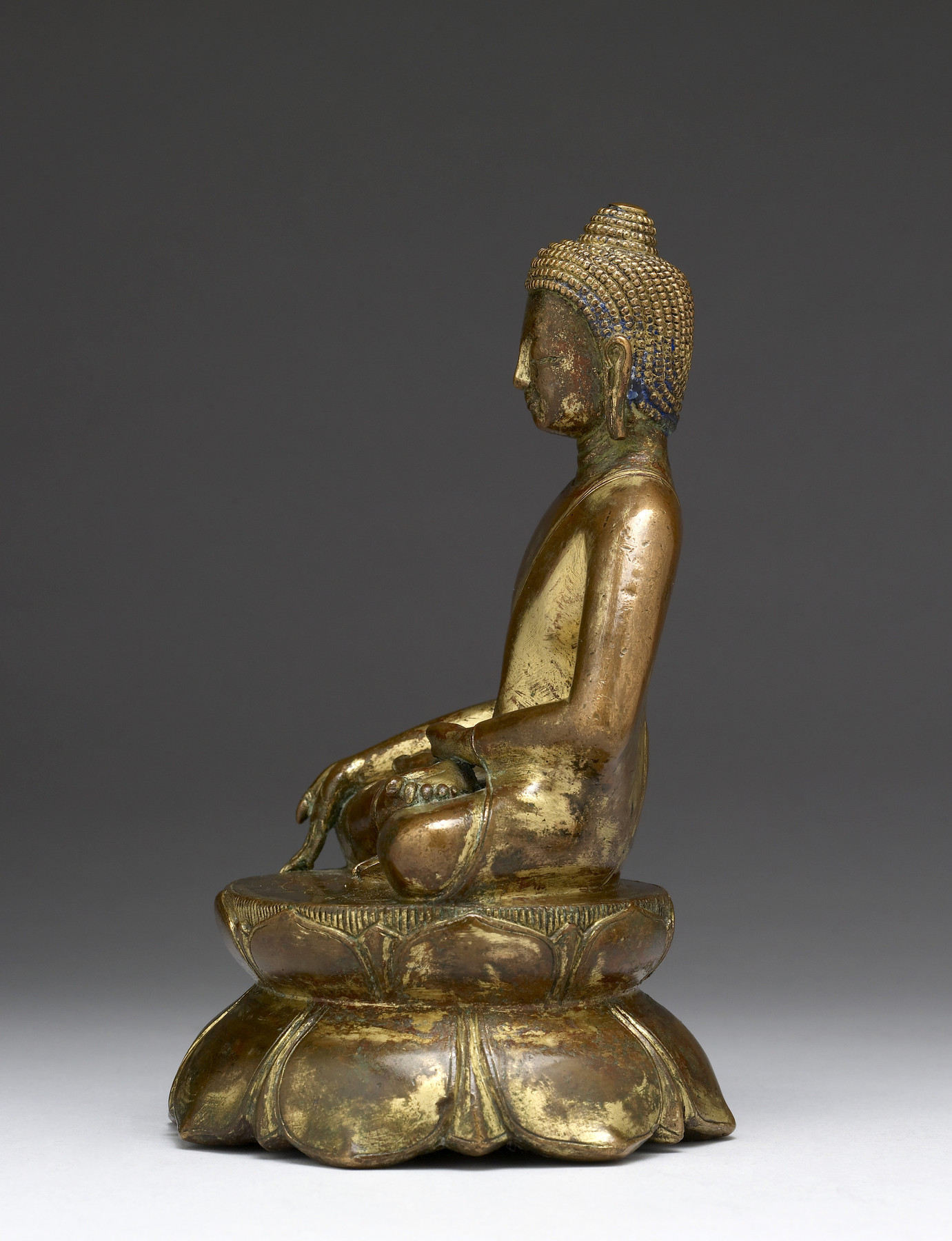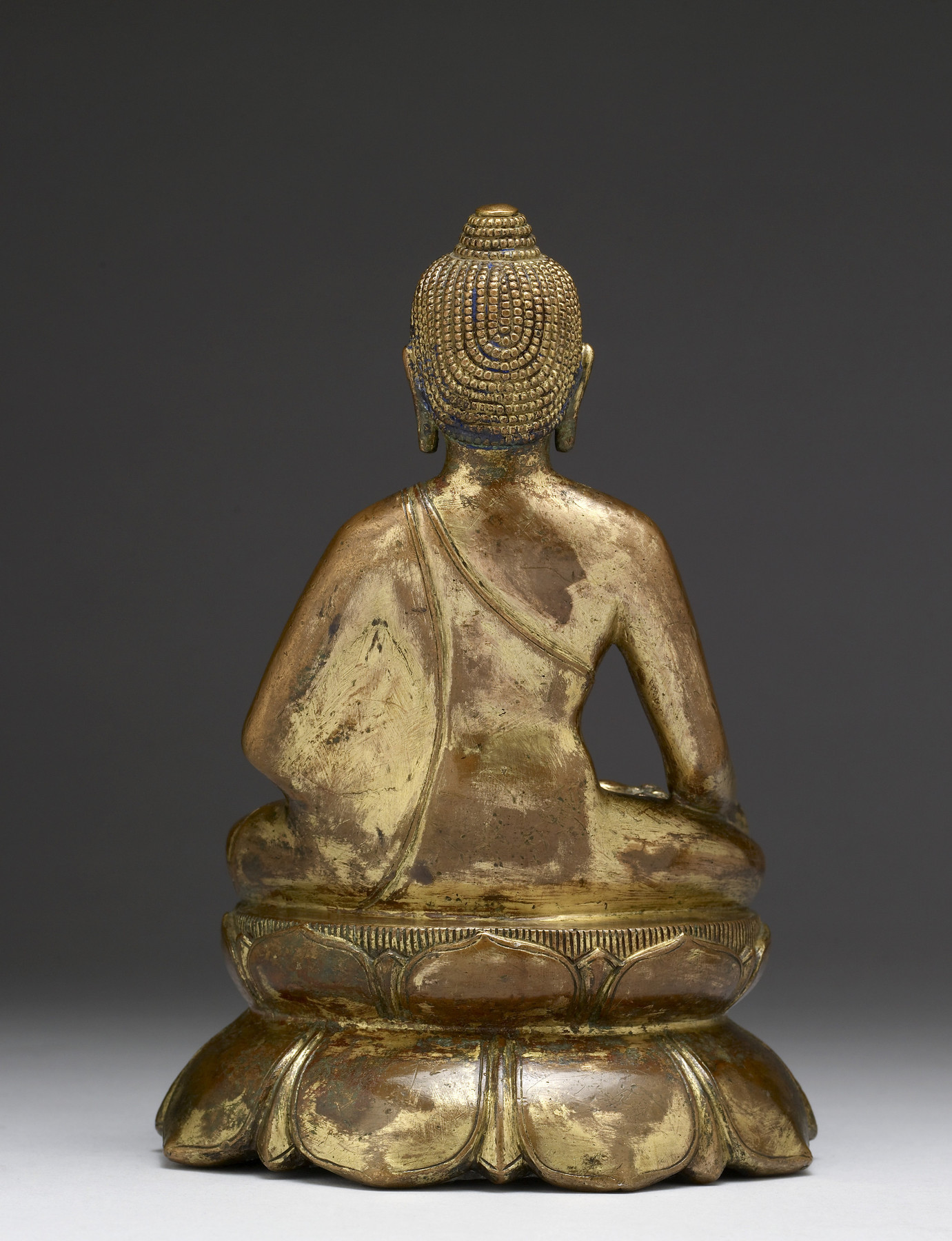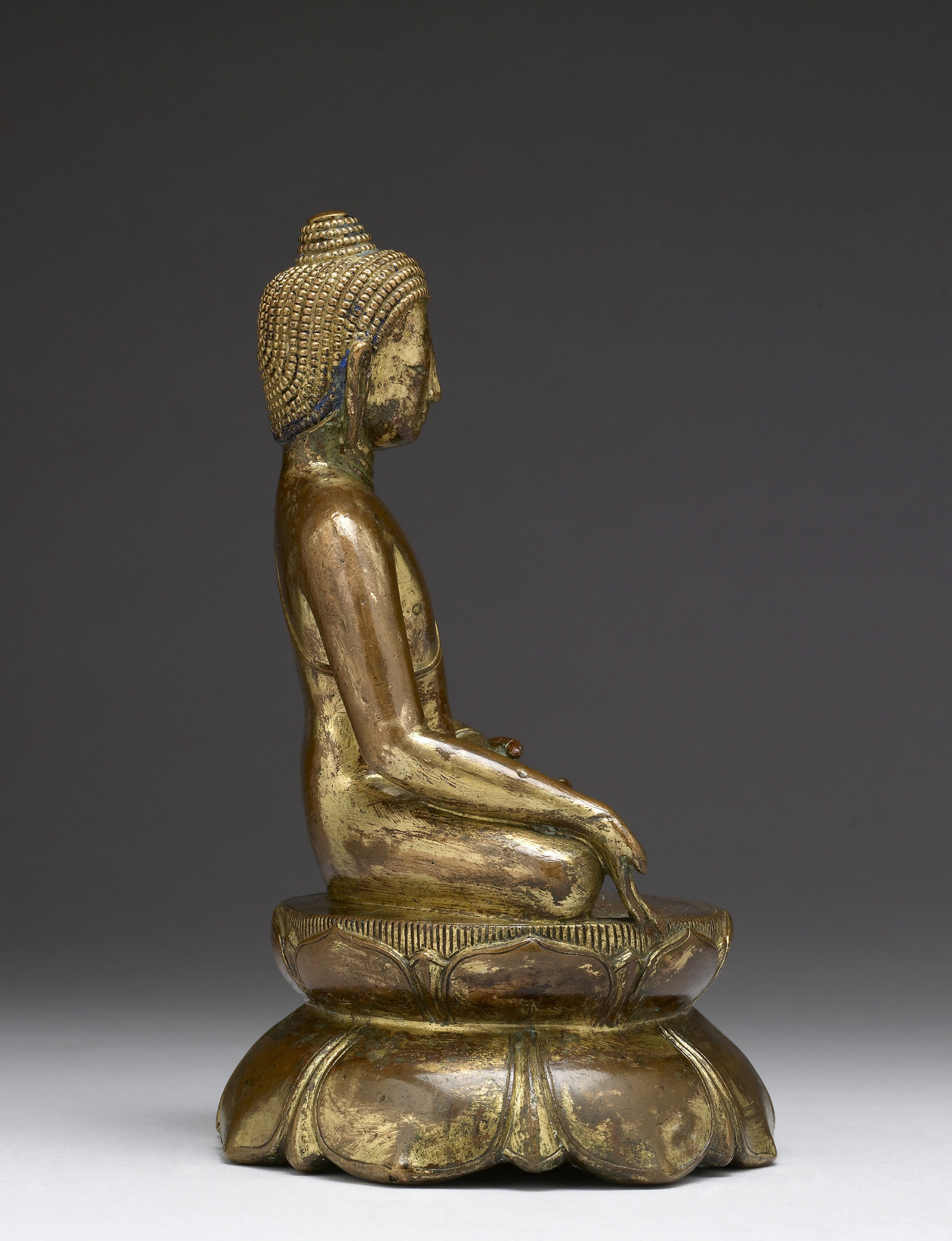Buddha Ratnasambhava
(India, Nepal, and Tibet)
Seated in the classic meditation posture on a lotus, the Buddha's right hand forms the gesture of charity (varadamudra). Rarely is the historical Buddha Shakyamuni represented with this gesture while seated, but it is the distinctive gesture of the transcendental Buddha Ratnasambhava. Hence, very likely, this figure once was part of a group of the five Buddhas and portrays Ratnasambhava, or the "jewel born." An unusual feature of this Buddha image is the treatment of the head. The face differs from comparative pieces because of the small, slit eyes, relatively flat, flaring nose, and small mouth. The smooth curls of hair appear like symmetrical rows of pearls both on the head and the bump (ushnisha).
Provenance
Provenance (from the French provenir, 'to come from/forth') is the chronology of the ownership, custody, or location of a historical object. Learn more about provenance at the Walters.
Heeramaneck auction sale, Public Plaza Galleries, New York; John and Berthe Ford, Baltimore, May 25, 1972, by purchase.
Exhibitions
| 2001-2003 | Desire and Devotion: Art from India, Nepal, and Tibet in the John and Berthe Ford Collection. The Walters Art Museum, Baltimore; Santa Barbara Museum of Art, Santa Barbara; Albuquerque Museum, Albuquerque; Birmingham Museum of Art, Birmingham; Hong Kong Museum of Art, Hong Kong. |
Geographies
Nepal (Place of Origin)
Measurements
H: 7 1/16 × W: 5 × D: 4 3/16 in. (18 × 12.7 × 10.7 cm)
Credit Line
Gift of John and Berthe Ford, 2013
Location in Museum
Not on view
Accession Number
In libraries, galleries, museums, and archives, an accession number is a unique identifier assigned to each object in the collection.
In libraries, galleries, museums, and archives, an accession number is a unique identifier assigned to each object in the collection.
54.3092

